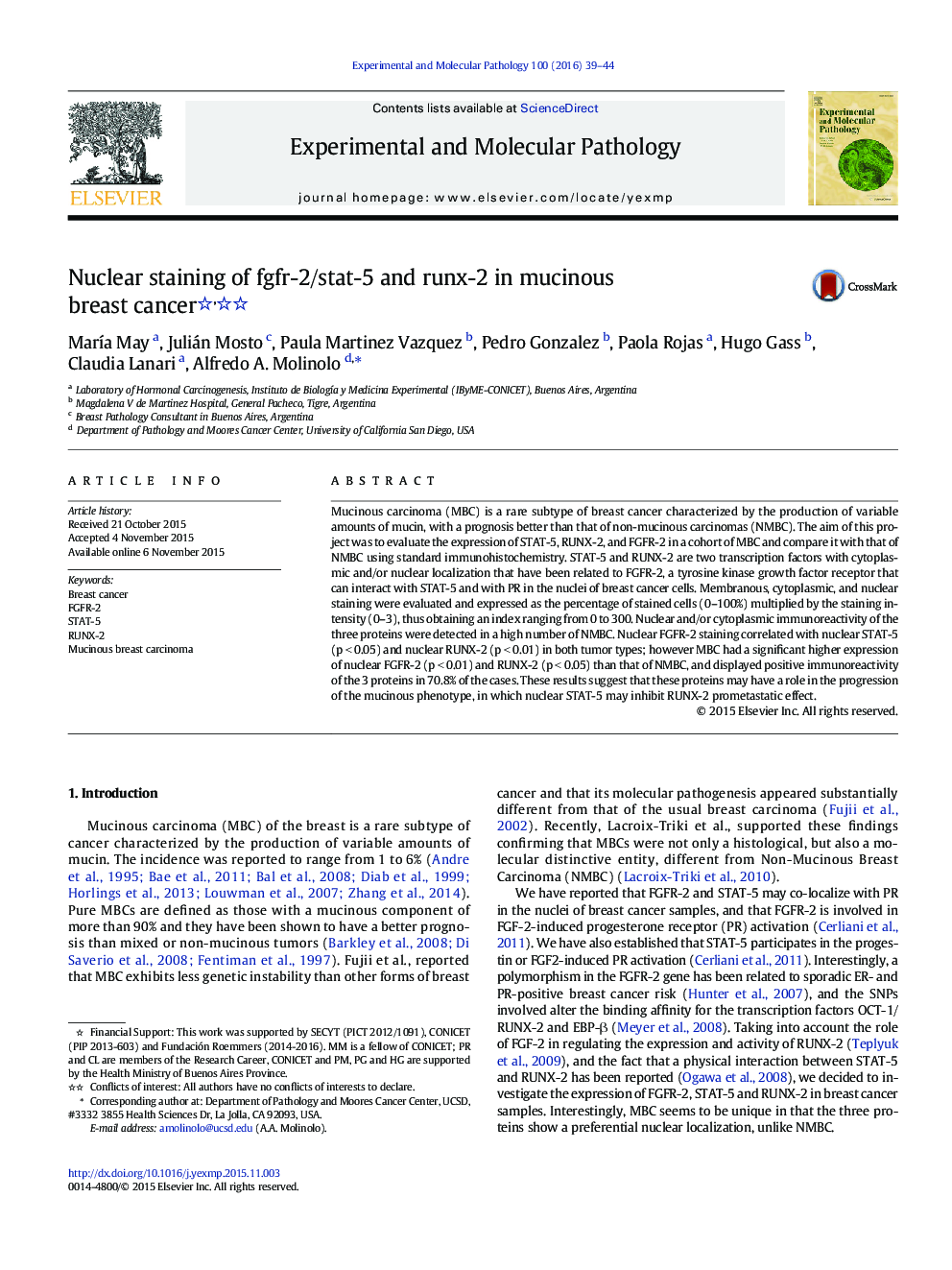| Article ID | Journal | Published Year | Pages | File Type |
|---|---|---|---|---|
| 2774977 | Experimental and Molecular Pathology | 2016 | 6 Pages |
Mucinous carcinoma (MBC) is a rare subtype of breast cancer characterized by the production of variable amounts of mucin, with a prognosis better than that of non-mucinous carcinomas (NMBC). The aim of this project was to evaluate the expression of STAT-5, RUNX-2, and FGFR-2 in a cohort of MBC and compare it with that of NMBC using standard immunohistochemistry. STAT-5 and RUNX-2 are two transcription factors with cytoplasmic and/or nuclear localization that have been related to FGFR-2, a tyrosine kinase growth factor receptor that can interact with STAT-5 and with PR in the nuclei of breast cancer cells. Membranous, cytoplasmic, and nuclear staining were evaluated and expressed as the percentage of stained cells (0–100%) multiplied by the staining intensity (0–3), thus obtaining an index ranging from 0 to 300. Nuclear and/or cytoplasmic immunoreactivity of the three proteins were detected in a high number of NMBC. Nuclear FGFR-2 staining correlated with nuclear STAT-5 (p < 0.05) and nuclear RUNX-2 (p < 0.01) in both tumor types; however MBC had a significant higher expression of nuclear FGFR-2 (p < 0.01) and RUNX-2 (p < 0.05) than that of NMBC, and displayed positive immunoreactivity of the 3 proteins in 70.8% of the cases. These results suggest that these proteins may have a role in the progression of the mucinous phenotype, in which nuclear STAT-5 may inhibit RUNX-2 prometastatic effect.
